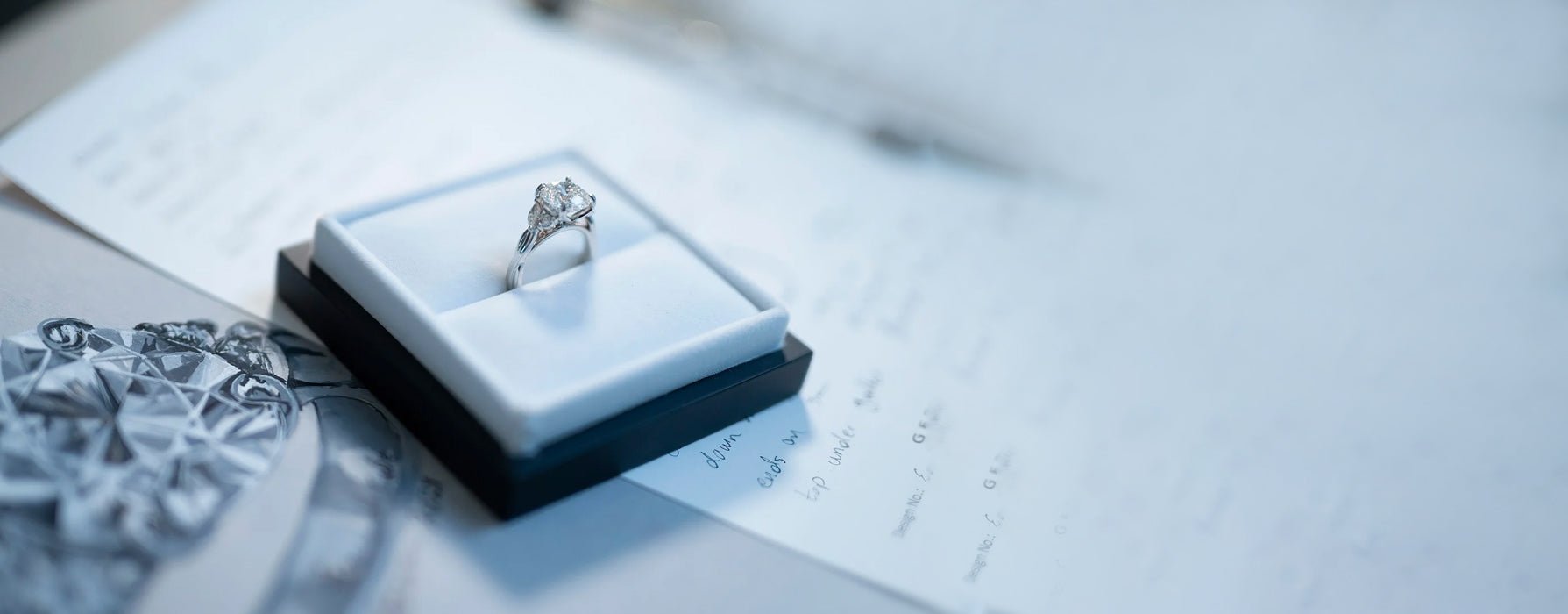
Fancy Colored Diamonds
Colored diamonds have different color strengths. The intense and vivid colors are the rarest. When using "Fancy Colored Diamonds" particular reference is made to the color intensity. The term “Natural Colored Diamonds,” on the other hand, refers to the natural base color of the diamond.
Colored diamonds are commonly known as “Fancy Colored Diamonds”. What characterizes them are their unique and delightful appearance as well as their rarity and the high prices offered for them. Only 0.1% of the diamonds mined annually are colored and only one in 10,000 diamonds is characterized by a natural, intense color. There are twelve primary colors of diamonds, which are modified by nine different overtones and seven intensities. This means that colored diamonds come in all colors of the rainbow and each colored diamond is truly unique.
Creation of the color
Diamonds consist almost exclusively of cubic crystallized carbon atoms. Colored diamonds differ from colorless diamonds in that another element was able to penetrate the crystalline carbon structure when they were formed. These elements create different colors. Yellow diamonds are created through the incorporation of nitrogen, while blue diamonds have inclusions of the semimetal boron. Red, pink or purple diamonds, on the other hand, are created by bending and rotating the diamond lattice during the creation process. Green diamonds get their color from naturally occurring radiation during their formation.
Rarity of colored diamonds
The value of colored diamonds depends heavily on the rarity of the color and its intensity. The rarest colors are intense pinks, blues and greens. Red or orange diamonds with a medium or strong intensity are also extremely rare. In addition to the color, the intensity and overtones play an important role in the choice of diamond. For example, pure colors, i.e. diamonds without overtones, are particularly rare.
The diamond types
Diamonds are made of carbon atoms with electrons bonded in pairs. This creates a very strong bond, also called a crystal lattice, which is responsible for the typical hardness of the diamond. In addition to the carbon atoms, other elements can be included in the lattice. These in turn influence the color of the diamond. To make it easier to classify and assess them, a distinction is made between Type I and Type II. A small comparison makes the differences clear:
Type I diamonds
The diamond contains detectable amounts of nitrogen. 98% of all diamonds are type I.
Type Ia
Color
Yellow
color intensity
Faint-Deep
Nitrogen atoms
Connected in pairs or groups
98% of diamonds are type Ia diamonds.
Type IIb
Color
yellow, orange, brown or green
color intensity
Deep
Nitrogen atoms
Individually and evenly distributed
Less than 0.1% of diamonds are type Ib diamonds.
Type II diamonds
The diamond contains no (detectable) nitrogen. 2% of all diamonds are type II.
Type IIa
Color
Color variations of pink, red, yellow-brown
These colors are created by rotating and bending the carbon lattice.
color intensity
Faint (almost colorless)
The diamond is made of pure carbon and has no impurities.
1-2% of all diamonds belong to type IIa.
Type IIb
Color
blue or gray
The red, orange and yellow light is absorbed.
color intensity
Faint-Deep
Type IIb diamonds contain boron atoms (semimetals).
0.1% of all diamonds belong to type IIb.
Our team is there for you!
Dear website visitors and customers, do you have any questions, requests or suggestions? Please call us
(Tel: 0800 8880770) .
You are also welcome to contact us at our email address (service@yorxs.de) .
We are available for you from Monday to Friday from 10 a.m. to 6 p.m. and Saturday from 10 a.m. to 3 p.m. Talk to us - we are always happy to help you.